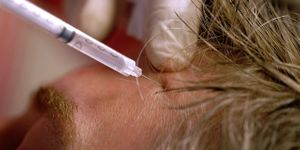Adding to the astonishing list of organoids engineered in the lab, researchers at Cardiff University announced the development of the
world’s first 3D mammary organs. Scientists hope the lab-grown structure will further enhance our depth of understanding of breast cancer, which may lead to better treatments in the future.

The team began by chemically treating mouse mammary cells with a cocktail of growth factors. Chief among the growth factor was a molecule known as Neuroregulin1, which is involved in breast development. The structure on which the cells grew allowed it to form into a three-dimensional miniature version of the real mammary glands, otherwise referred to as an “organoid.”
Although scientists have been able to study breast cells and tissues in the lab, much of the experiments have been done at a 2-dimensional level. How cells and tissues interact in 3D inside a complex organ hasn’t been realistically modeled before. Furthermore, Trevor Dale, the study’s senior author, pointed out that hormone regulation – one of the crucial aspects of breast tumor development – isn’t reliably captured with cells on a dish.
"Much of how breast tissues respond to external stimuli such as hormones is, as yet, unknown. In order to fully tackle the mechanisms that lie behind breast cancer we first need to understand how healthy breast tissue develops,” said Dale. “As such, developing a model of a normal breast with the actual architecture of a mammary gland has long been a 'Holy Grail' for cancer researchers."
In addition to creating a lifelike 3D model that mimics the real biological structure, the researchers also found ways to maintain the organoid. Whereas the products of previous efforts contained cells that didn’t divide, the new 3D structure can actually grow. The 3D mammary glands can purportedly last for over 2 months, which is a steep advancement from the 2 weeks with previous models.
The longevity and the lifelike qualities of this model will go a long way in helping researchers understand breast biology and tumor development. Theoretically, with these structures, researchers can model tumor growth and subsequently test the effects of various candidate drugs.
"This model allows us to really study the basic biology of how the breast develops -- how hormones work, what are the genetic influences. Further down the track we hope to use this model in tandem with models of breast cancer in order to carry out effective drug-screening,” added Thierry Jarde, the study’s first author.
Additional sources:
Forbes,
University of Cardiff









